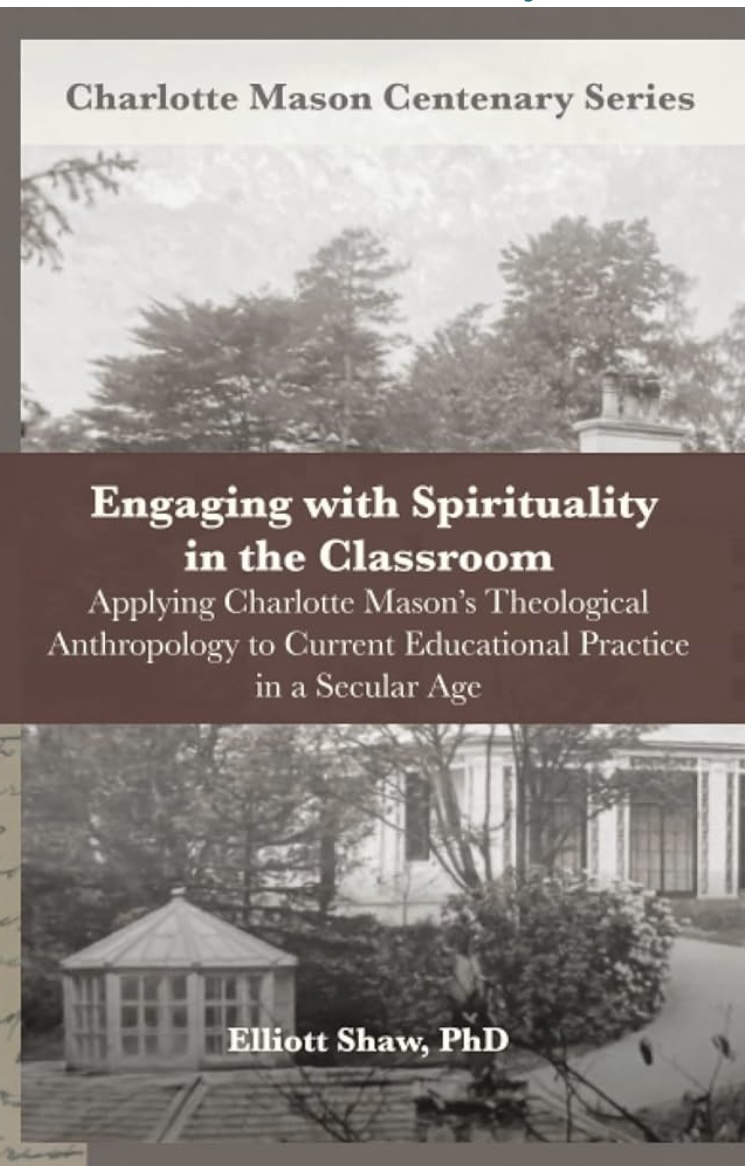January 18, 2024
Engaging with Spirituality in the Classroom with Elliot Shaw
Dr. Shaw shares his thoughts on engaging with spirituality in the classroom.
.jpg)
Introduction
The Charlotte Mason Centenary Series, a multi-authored monograph series commissioned in connection with the Charlotte Mason Centenary, is designed to highlight and explore the continuing educational and leadership relevance of the late 19th-century British educationalist Charlotte Mason (1842-1923) through the collective contributions of The Armitt Museum and Library, the University of Cumbria, the Charlotte Mason Institute, and other scholars and practitioners worldwide.
This post is included in a series on the monographs. Each post gives a snapshot of the author's motivation for writing, the various topics and content of each monograph, and suggestions for who might benefit most from the work.
Interview
Elliott Shaw has a BA in French from University College, London, a BA in Theology from St. Peter’s College, Oxford, and a PhD from the Departments of Religious Studies and History at Lancaster University. He began his teaching career as Research Fellow in Theology at Lancaster University; on completion of the fellowship, he took up a teaching position in the Department of Religious Studies and Social Ethics at St. Martin’s College(later the University of Cumbria), later becoming lead for the Religious Studies program. In 2016 he moved to the Institute of the Arts at the same university to take up the role of leading the development of the Critical and Contextual Studies scheme. In 2020 Dr. Shaw left the University of Cumbria and took up a position as Associate Professor in the School of Foreign Languages at Qingdao University, China, where he teaches courses on writing and cultural studies.

What motivated you to join this research project?
Dr. Elliot Shaw: I was approached by a former colleague to contribute to the project. The topic of children's spirituality is one that remains somewhat under-researched. Engaging with the topic has enabled me to deepen my understanding of Charlotte Mason's views on spirituality and to situate her account of children's spirituality within the context of the broader tradition of the scholarly study of this topic.
What was the most interesting thing you discovered during your research and writing?
Elliot: There is an interesting affinity between Charlotte Mason's critique of the intellectual culture and educational practices of her own times and certain present-day thinking about education and children's spirituality. In the course of the study, I became particularly aware of Mason's rather negative views of the Enlightenment and its intellectual heritage. This resonates with certain forms of contemporary criticisms of cultural and educational practice which view Western thinking as emphasizing the calculative at the expense of the contemplative.
What one or two ideas do you most hope people take away from reading your monograph?
Elliot: Charlotte Mason was a robust cultural critic and her views on spirituality are integral to her cultural criticism. Like a number of her figures from her period, Mason privileged the spirituality of the child. However, what lends distinction to Mason's account of the child's spirituality is that it is made in the context of her broader criticism of education and civilization.
Who do you think should (especially) read your monograph?
Elliot: Those working in education and those interested in children's spirituality would gain from reading the monograph.
.jpg)
FROM THE TEXT
"For Mason, a key role of education was to complement fact-based understanding of the natural environment with a sense of spiritual connection to nature. Such a goal is as relevant today as it was in Mason’s time." (p. 16)
"So far, it has been established that, in engaging with the defining cultural forces of her time, Mason sought a balance between challenging modes of thinking that disturb faith while at the same time being open to new forms of scientific knowledge." (p. 26)
"Mason’s formation of a pedagogy that connects the spiritual development of the child to the observation of nature complements previous and later thinking about these areas of educational practice." (p. 33)
"The prescription that children can appreciate the world of nature through the observation of animals and the use of a nature notebook to record their encounter with nature complements the work of recent exponents of spiritual ecology." (p. 37)

Elliot’s monograph is available in print as a physical or digital copy.

